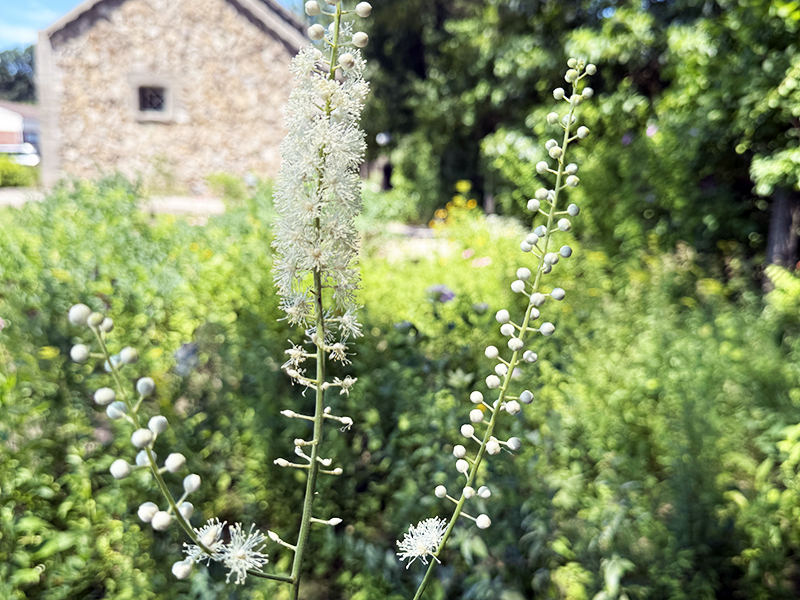
July 24, 2025| Education, Environment
By: Laurie Kane
Now blooming in our native gardens, black cohosh (Cimicifuga racemosa) is a striking woodland native that will create a strong vertical accent in shade gardens or border areas. The graceful white flower spires stand out against deep green foliage and provide late summer blooms when other flowers have faded. Black cohosh grows 4–5 feet tall with a full, bushy base, making it ideal for filling in shady, naturalized areas. It is considered deer resistant and has an odor that repels some insects. The tall flowers attract a variety of pollinators, and it is a host plant for the Appalachian azure butterfly.
.jpg) |
.jpg) |
Historically, Native Americans used black cohosh root to address a range of conditions, such as sore throat, lung and kidney issues, malaria, and snakebite. Today, it is sometimes included in dietary supplements marketed for menstrual cramps and menopause symptoms.
We invite you to visit our native gardens at 125 Landing Road in Landing to see black cohosh and many other native plants now in bloom. Native plants not only support local bees, butterflies, birds, and other wildlife, they also conserve water, handle drought better, and require less maintenance. We hope you’ll be inspired to incorporate native plants into your yard or garden, supporting local wildlife and contributing to a healthier environment!